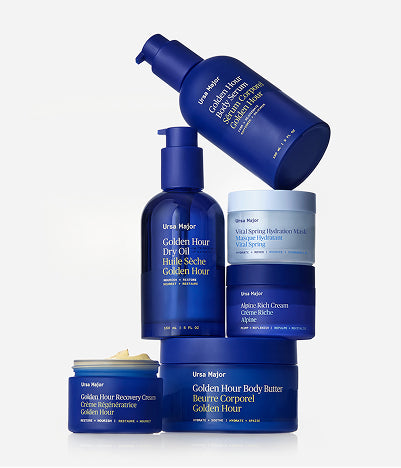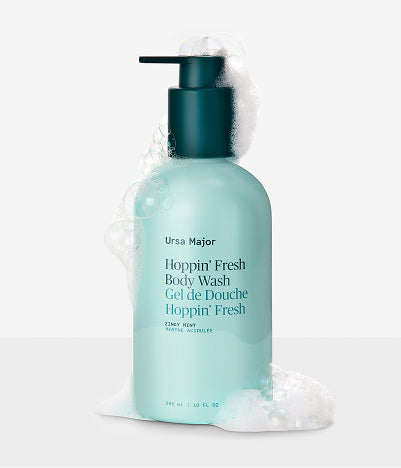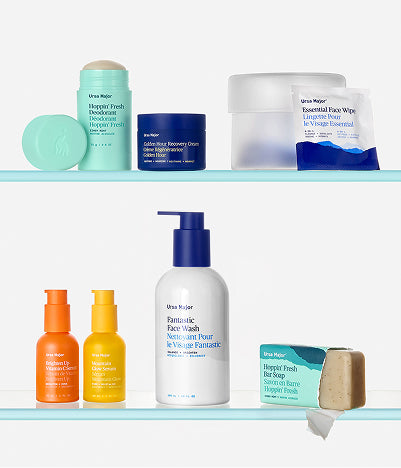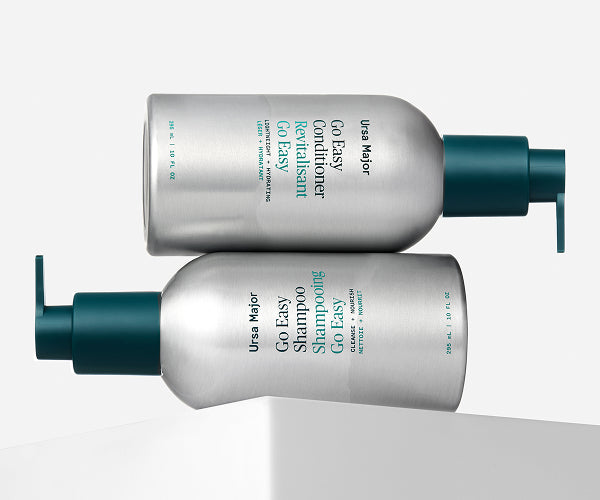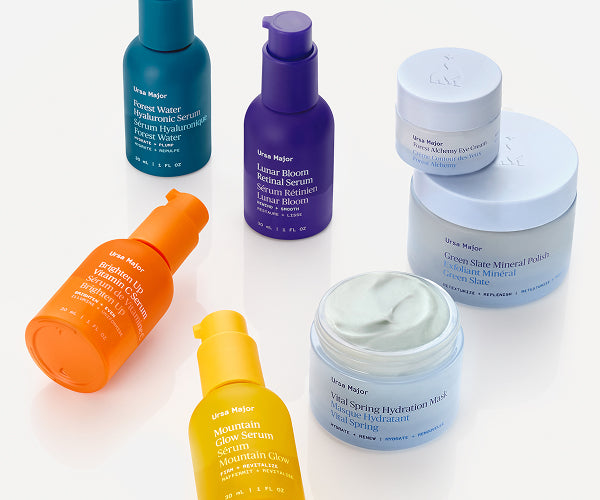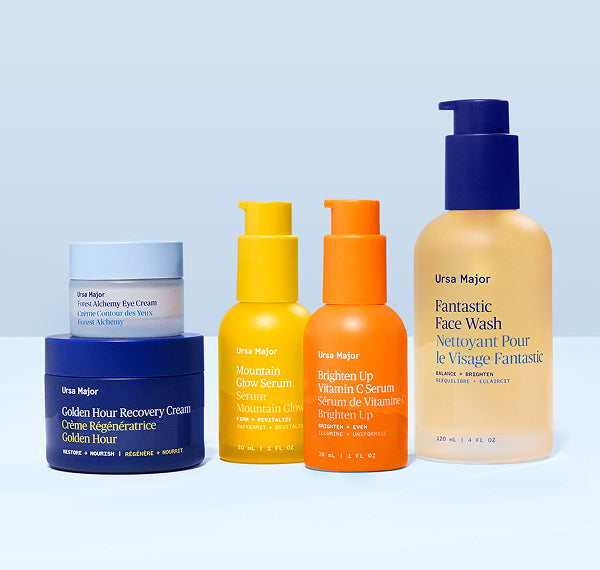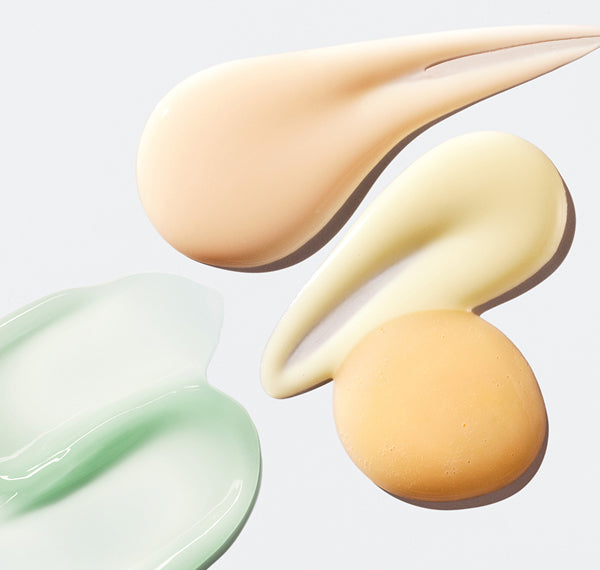What Are Toxics?
Posted by Afterpay Key on

You’ve probably heard the term “toxins” a lot lately (maybe a little too much!), and at this point you know they're best avoided. But what exactly are these “toxins” and what dangers do they pose? We’ve partnered with a physician and an environmental toxicologist to learn more about these toxic substances, and we wanted to share this information here on our blog.
First of all, let's clear up some misconceptions about the term “toxin” itself. “Toxin” technically refers to a naturally occurring chemical (produced by a plant or animal). When discussing problematic (and usually synthetic) chemicals in consumer products, the terms "toxicants", "toxics", or "toxic chemicals" are more accurate - so these are the terms we’re going to stick to in this post.
 There are far too many toxics in consumer products to cover here, so we've decided to focus on the groups of harmful ingredients on our "Never List", which reads: "No Artificial Fragrances or Colors, MEA, DEA or TEA, Parabens, Phthalates, PEG compounds, Sulfates, Silicones, or any other petrochemicals". Here we go:
There are far too many toxics in consumer products to cover here, so we've decided to focus on the groups of harmful ingredients on our "Never List", which reads: "No Artificial Fragrances or Colors, MEA, DEA or TEA, Parabens, Phthalates, PEG compounds, Sulfates, Silicones, or any other petrochemicals". Here we go:
Artificial Colors
Function: Colorants.
Found in: Tinted/colored products.
Danger: Dyes are often derived from coal tar or other petroleum byproducts.
How they’re listed: Usually as a color followed by a number (ie, “Red 4”).
Artificial Fragrance
Function: Scent.
Found in: Scented products and perfumes.
Danger: The terms "Fragrance" (USA) and "Parfum"(EU) give no information about the ingredients in the scent, which may include many synthetic and potentially allergenic compounds (by law in the US, companies are not required to disclose the ingredients in their "fragrance" as it's considered a trade secret). If a product is in fact all-natural, "fragrance" or "parfum" should be followed by an asterisk on the ingredient list, with a footnote clarifying what the "fragrance" actually consists of (i.e, "composed of 100% pure essential oils.")
How they’re listed: “Fragrance” or “Parfum” (without an asterisk).
MEA (Monoethanolamine), DEA (Diethanolamine), or TEA (Triethanolamine) derivatives
Function: Surfactants (foaming agents), emulsifiers (prevents separation of ingredients).
Found in: Face and body washes, shampoos, hair colors, and more.
Danger: Possible carcinogens, may result in contamination with nitrosamines.
How they’re listed: Anything with MEA, DEA, or TEA.
Parabens
Function: Preservatives.
Found in: 75 to 90% of all cosmetic products on the market2
Danger: Endocrine disruptors3, possible carcinogens4.
How they’re listed: Methyl/ethyl/butyl/isobutyl/propyl paraben.
PEG Compounds
Function: Humectants (attracts moisture), surfactants (foaming agents), emulsifiers (prevents separation of ingredients), penetration enhancers (increases product absorption into skin).
Found in: Lotions, soaps, shampoo, makeup, and more.
Danger: May be contaminated with carcinogens like 1,4-dioxane5, can help carry these impurities through skin6, may cause birth defects7 and infertility.
How they’re listed: Anything with “PEG” in the name.
Function: Plasticizers, fragrance solvents.
Found in: Many perfumes and scented products.
Danger: Endocrine disrupters8, respiratory toxicants9, can cause birth defects and infertility in males10, may lead to pregnancy loss in females 11, may alter childhood brain development12.
Function: Emollients (seals in moisture), emulsifiers, texturizers.
Found in: Lotions, soaps, shampoo, makeup, styling products and more.
Danger: Though not associated with serious human health problems, silicones are environmental contaminants, non-biodegradable, and prohibited ingredients under the EcoCert certification13.
Sulfates
Function: Surfactants (foaming agents), emulsifiers (prevents separation of ingredients).
Found in: Face wash, body wash, shampoos, soaps, toothpaste, and more.
Danger: Common irritants, penetration enhancers, may be contaminated with known carcinogens like 1,4 dioxane 14.
How they’re listed: Sodium lauryl/laureth sulfate, sodium dodecyl sulfate, sodium salt sulphuric acid, monododecyl ester.
We know it’s a lot to take in, and also a little scary! We don’t yet have perfect knowledge here, but we’re doing our best to find “the truth” - as much as that’s possible - and we’re committed to sharing our learnings as we go (please chime in if you have any questions or comments or something to add!).
Stay tuned for the next part in our series, where we’ll discuss how toxic chemicals actually enter our bodies through personal care products. In the meantime, here are some resources for learning more about toxic chemicals in consumer products:
Toxipedia - A good resource if you are searching for information on a specific chemical or concept.
The Campaign for Safe Cosmetics - This site helps consumers understand the risks associated with some ingredients and identify safer alternatives.
EWG’s Skin Deep Database - Allows you to search by chemical, product, or brand to see potential risks associated with them.
Safer Choice - A program of the EPA that helps businesses identify safer ingredients to use in their products.
GreenScreen - Another resource for identifying safer ingredients (similar to the EPA's safer choice program).
Advocacy Groups:
Breast Cancer Fund
Healthy Child, Healthy World
NRDC’s Health Program
Safer Chemicals, Healthy Families
Silent Spring Institute
1. [California EPA; National Toxicology Program 1]↩
2. [Winter, A Consumer's Dictionary of Cosmetics Ingredients, 32]↩
3. [ Darbre, P. D., & Harvey, P. W. (2008). Paraben esters: review of recent studies of endocrine toxicity, absorption, esterase and human exposure, and discussion of potential human health risks. Journal of applied toxicology, 28(5), 561-578.]↩
4. [ Harvey, P. W., & Everett, D. J. (2004). Significance of the detection of esters of p‐hydroxybenzoic acid (parabens) in human breast tumours. Journal of Applied Toxicology, 24(1), 1-4.] [ Khanna, S., & Darbre, P. D. (2013). Parabens enable suspension growth of MCF‐10A immortalized, non‐transformed human breast epithelial cells. Journal of Applied Toxicology, 33(5), 378-382].↩
5. [Black RE, Hurley FJ, and Havery DC. "Occurrence of 1,4-dioxane in cosmetic raw materials and finished cosmetic products." Int J PharJ AOAC Int. 84, 3 (May-Jun 2001):666-70.]↩
6. [Epstein, S with Fitzgerald, R. Toxic Beauty. Dallas: BenBella Books, 2009: 158-9]↩
7. [EPA]↩
8. [European Commission on Endocrine Disruption]↩
9. [European Chemicals Agency,Candidate List of substances of very high concern ]↩
10. [EPA Hazardous Air Pollutants]↩
11. [G. Toft et al. "Associated between Pregnancy Loss and Urinary Phthalate Levels around the Time of Conception," Environmental Health Perspectives 120 (2012), no. 2:458-63]↩
12. [Swan et al. "Prenatal Phthalate Exposure," International Journal of Andrology 33 (2010): 259-69]↩
13. [Ecocert.]↩
14. [ Black RE, Hurley FJ, and Havery DC. "Occurrence of 1,4-dioxane in cosmetic raw materials and finished cosmetic products." Int J PharJ AOAC Int. 84, 3 (May-Jun 2001):666-70.]↩
